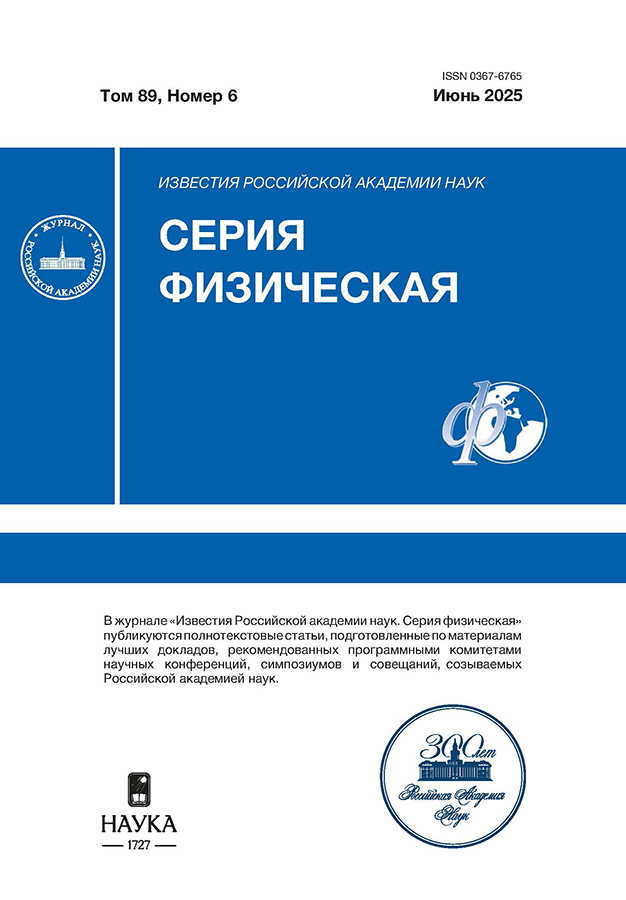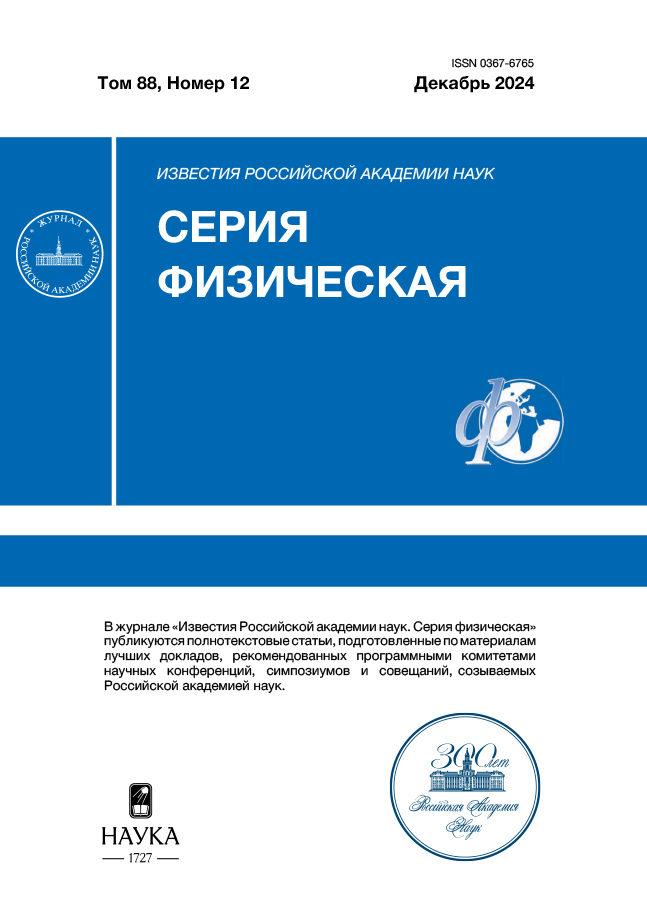Single molecules detection according to plasmon-enhanced photoluminescence in CeYTbF3 colloidal nanoparticles
- Authors: Izbasarova Е.А.1, Gazizov A.R.1
-
Affiliations:
- Kazan (Volga Region) Federal University
- Issue: Vol 88, No 12 (2024)
- Pages: 1932-1939
- Section: Nanooptics, photonics and coherent spectroscopy
- URL: https://rjdentistry.com/0367-6765/article/view/682293
- DOI: https://doi.org/10.31857/S0367676524120143
- EDN: https://elibrary.ru/EWDAGO
- ID: 682293
Cite item
Abstract
The interaction of luminescent nanoparticles with plasmonic nanoparticles changes their luminescence, which is associated with the appearance of Förster and Purcell effects. To enhance luminescence, it is important to reduce the effect of the Foerster effect. The finite difference method in the time domain made it possible to determine the conditions for the predominance of the Purcell effect and to develop a technique for analyzing the amplification of transitions, which increases the sensitivity of sensors based on fluorescent nanoparticles.
Full Text
About the authors
Е. А. Izbasarova
Kazan (Volga Region) Federal University
Author for correspondence.
Email: Izbasarova.E.A@mail.ru
Институт физики
Russian Federation, KazanA. R. Gazizov
Kazan (Volga Region) Federal University
Email: Izbasarova.E.A@mail.ru
Институт физики
Russian Federation, KazanReferences
- Cohen L., Cui N., Cai Y. et al. // ACS Nano. 2020. V. 14. No. 8. P. 9491.
- Barik A., Otto L.M., Yoo D. et al. // Nano Lett. 2014. V. 14. No. 4. P. 2006.
- Избасарова Э.А., Газизов А.Р., Харинцев С.С. // Изв. РАН. Сер. физ. 2023. Т. 87. № 12. С. 1788, Izbasarova E.A., Gazizov A.R., Kharintsev S.S. et al. // Bull. Russ. Acad. Sci. Phys. 2023. V. 87. No. 12. P. 1862.
- Qin X., Xu J., Wu Y., Liu X. // ACS Cent. Sci. 2019. V. 5. P. 29.
- Chen G., Ohulchanskyy T.Y., Liu S. et al. // ACS Nano. 2012. V. 6. No. 4. P. 2969.
- Shah S.J., Li W., Tang Y. et al. // Appl. Catal. B. 2022. V. 315. Art. No. 121555.
- Жарков Д.К., Шмелев А.Г., Леонтьев А.В. и др. // Изв. РАН. Сер. физ. 2020. Т. 84. № 12. С. 1746, Zharkov D.K., Shmelev A.G., Leontyev A.V. et al. // Bull. Russ. Acad. Sci. Phys. 2020. V. 84. No. 12. P. 1486.
- Mendez-Gonzalez D., Lopez-Cabarcos E., Rubio-Retama J., Laurenti M. // Adv. Colloid Interface Sci. 2017. V. 249. P. 66.
- Yang B., Chen H., Zheng Z., Li G. // J. Luminescence. 2020. V. 223. Art. No. 117226.
- Han Y., Noor M.O., Sedighi A. et al. // Langmuir. 2017. V. 33. No. 45. P. 12839.
- Mendez-Gonzalez D., Melle S., Calderón O.G. et al. // Nanoscale. 2019. V. 11. No. 29. P. 13832.
- Kushlyk M., Tsiumra V., Zhydachevsky Y. et al. // J. Alloys Compounds. 2019. V. 804. P. 202.
- Lu D., Cho S.K., Ahn S. et al. // ACS Nano. 2014. V. 8. No. 8. P. 7780.
- Sun Q.C., Mundoor H., Ribot J.C. et al. // ACS Nano. 2014. V. 14. No. 1. P. 101.
- Saboktakin M., Ye X., Chettiar U.K. et al. // ACS Nano. 2013. V. 7. No. 8. P. 7186.
- Greybush N.J., Saboktakin M., Ye X. et al. // ACS Nano. 2014. V. 8. No. 9. P. 9482.
- Yi G., Moon B.S., Wen X. et al. // J. Phys. Chem. C. 2018. V. 122. No. 24. P. 13047.
- Das A., Mao C., Cho S.et al. // Nature Commun. 2018. V. 9. No. 1. P. 4828.
- Zhang S.Z., Sun L.D., Tian H. et al. // Chem. Commun. 2009. No. 18. P. 2547.
- Wu Q., Long Q., Li H. et al. // Talanta. 2015. V. 136. P. 47.
- Li Z., Wang L., Wang Z. et al. // J. Phys. Chem. C. 2011. V. 115. No. 8. P. 3291.
- Seregina E.A., Seregin A.A., Tikhonov G.V. // Opt. Spectrosc. 2014. V. 116. No. 3. P. 438.
- Terra I.A., Borrero-González L.J., Almeida J.M. et al. // Quim. Nova. 2020. V. 43. P. 188.
- Ramble J.R. Handbook of chemistry and physics. CRC Press, 2021. 1550 p.
- https://www.chemsrc.com/en/cas/9002-98-6_658402.html
- Neese F. // Wiley Interdiscip. Rev. Comput. Mol. Sci. 2012. V. 2. P. 73.
- Weigend F., Ahlrichs R. // Phys. Chem. Chem. Phys. 2005. V. 7. P. 3297.
- Becke A.D. // J. Chem. Phys. 1993. V. 98. P. 5648.
- Lee C., Yang W., Parr R.G. // Phys. Rev. B. 1988. V. 37. P. 785.
- Grimme S., Antony J., Ehrlich S. et al. // J. Chem. Phys. 2010. V. 132. No. 15. P. 154104.
- Grimme S., Ehrlich S., Goerigk L. // J. Comput. Chem. 2011. V. 32. P. 1456.
- Valueva S.V., Vylegzhanina M.E., Meleshko T.K. et al. // Russ. J. Appl. Chem. 2020. V. 93. P. 89.
- https://omlc.org/spectra/PhotochemCAD/html/084.html.
- Pudovkin M.S., Kalinichenko S.I., Nizamutdinov A.S. // Opt. Mater. 2024. V. 148. Art. No. 114831.
- Nizamutdinov A., Lukinova E., Shamsutdinov N. et al. // J. Compos. Sci. 2023. V. 7. P. 255.
- Khusainova A.I., Nizamutdinov A.S., Shamsutdinov N.I. et al. // Materials. 2024. V. 17. P. 316.
- Gazizov A.R., Salakhov M.Kh., Kharintsev S.S. // Bull. Russ. Acad. Sci. Phys. 2022. V. 86. Suppl. 1. P. S71.
- Газизов А.Р., Салахов М.Х., Харинцев С.С. // Письма в ЖЭТФ. 2023. Т. 117. № 9. C. 670, Gazizov A.R., Salakhov M. Kh., Kharintsev S.S. // JETP Lett. 2023. V. 117. No. 9. P. 668.
Supplementary files















